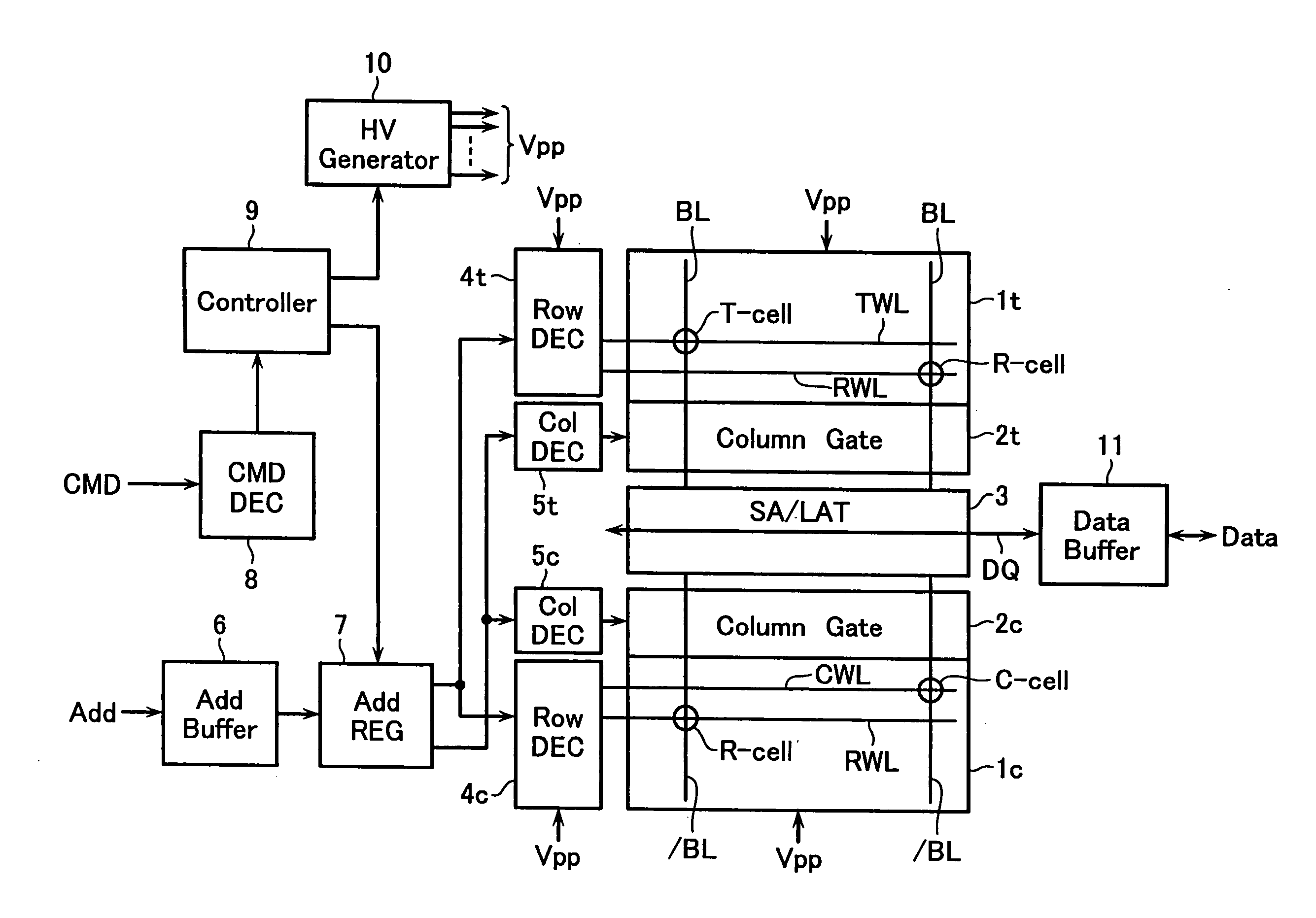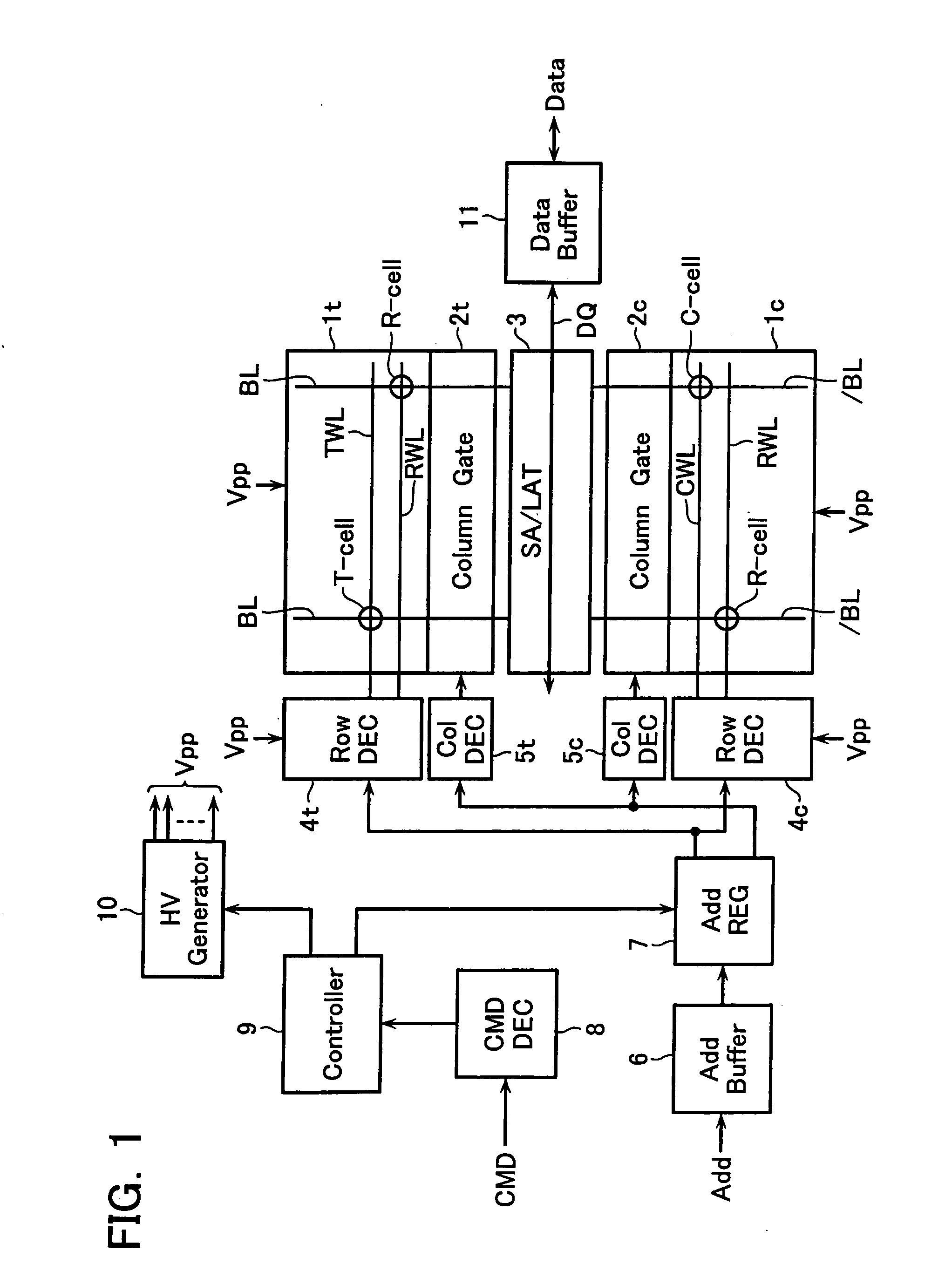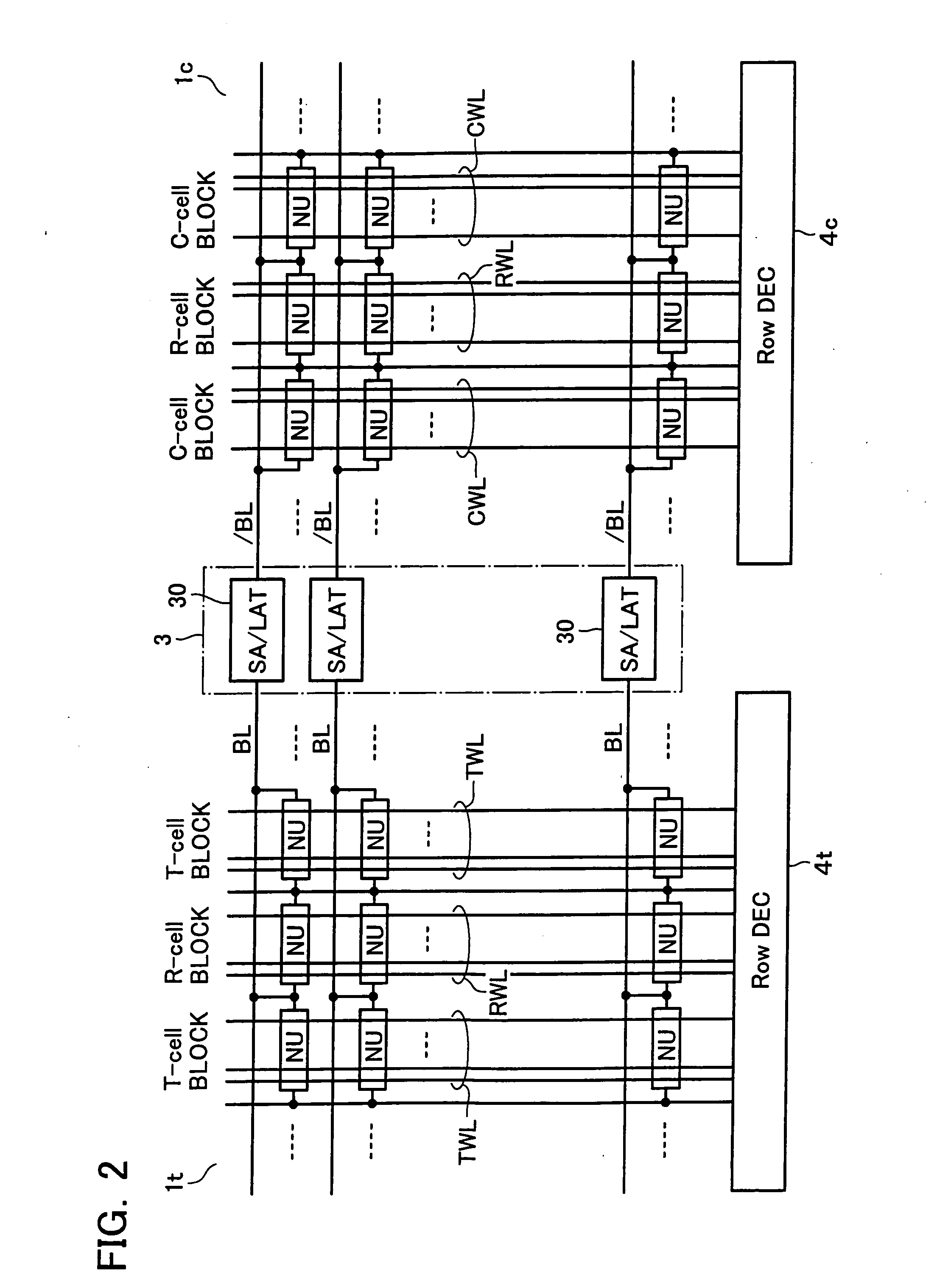Semiconductor memory device
a memory device and semiconductor technology, applied in the field of semiconductor memory devices, can solve the problems of improving the speed of the nand-type and the difficulty of high-speed data sens
- Summary
- Abstract
- Description
- Claims
- Application Information
AI Technical Summary
Benefits of technology
Problems solved by technology
Method used
Image
Examples
Embodiment Construction
[0078] Illustrative embodiments of this invention will be explained with reference to the accompanying drawings below.
[0079] In a semiconductor memory device in accordance with this embodiment, the main portion of the memory cell array is set as an area of “information cells”, into each of which one of plural physical quantity levels (i.e., data levels) is written while the remaining portion is set as an area of “reference cell(s)”, into which a fixed physical quantity level (i.e., reference level) is written for serving for detecting the data levels. In other words, there is prepared a common reference cell in correspondence with plural information cells, and the reference cell constitutes a pair with each of the plural information cells.
[0080] The detail will be explained below. In case of a four-value data storage scheme, an information cell is set to have a data level selected in L0, L1, L2 and L3 (where L0123 ). L0 is an erase state with the lowest level; and L1, L2 and L3 ar...
PUM
 Login to View More
Login to View More Abstract
Description
Claims
Application Information
 Login to View More
Login to View More - R&D
- Intellectual Property
- Life Sciences
- Materials
- Tech Scout
- Unparalleled Data Quality
- Higher Quality Content
- 60% Fewer Hallucinations
Browse by: Latest US Patents, China's latest patents, Technical Efficacy Thesaurus, Application Domain, Technology Topic, Popular Technical Reports.
© 2025 PatSnap. All rights reserved.Legal|Privacy policy|Modern Slavery Act Transparency Statement|Sitemap|About US| Contact US: help@patsnap.com



